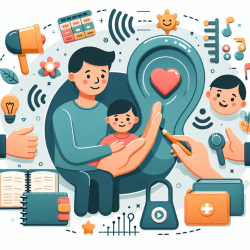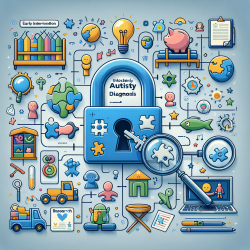Central Auditory Disorders and Developmental Aphasia present complex challenges in the educational and therapeutic landscapes. The nuanced understanding of these conditions is crucial for practitioners aiming to enhance their skills and effectively support their students. Drawing on Jon Eisenson's exploration in "Central Auditory Disorders and Developmental Aphasia: Is There A Difference?", this blog post delves into the implications of these disorders for educational practice and encourages further research and application of findings.
At the outset, Eisenson's work underscores the difficulty in pinning down concrete definitions for central auditory processing, central auditory disorders, and developmental aphasia. This ambiguity, rather than being a barrier, opens up a realm of exploration that is rich with potential for enhancing educational and therapeutic practices. Central auditory processing, as described, involves the intricate mechanisms our brains employ to receive, perceive, decode, and utilize speech sound signals. The distinction between hearing and listening becomes pivotal here, highlighting the need for targeted interventions that go beyond the auditory system's ability to detect sound.
Understanding the challenges faced by children with central auditory disorders and developmental aphasia is key to developing effective strategies. These children often demonstrate significant difficulties in processing speech at the phonemic decoding level, akin to the impairments seen in adults with acquired Wernicke's aphasia. This parallel underscores the critical nature of phonemic and temporal order resolution in the development of language and literacy skills.
Eisenson's review of various studies and approaches to assessing central auditory processing deficits in children offers valuable insights. The emphasis on the functional relationship between these deficits and the development of language disorders, other than those associated with reading disabilities, is particularly enlightening. It suggests a broader scope of impact, necessitating a comprehensive approach to intervention that addresses the multifaceted needs of these students.
The differentiation between developmental aphasia and central auditory disorders is nuanced, with implications for diagnosis and intervention. Developmental aphasia, characterized by a primary impairment in the processing of oral language, requires interventions that are tailored to enhance decoding and encoding capabilities. This distinction is critical for practitioners, as it guides the selection of strategies that are most likely to support the child's language development effectively.
Importantly, Eisenson's work challenges us to consider the inherent capabilities of children with these disorders. The drive to hear, listen, and learn language is powerful, suggesting that with appropriate interventions and support, children can overcome the initial obstacles posed by their conditions. This perspective is not only hopeful but also backed by evidence of successful outcomes for children who receive targeted support.
For practitioners, this research underscores the importance of early identification and intervention. Understanding the specific challenges associated with central auditory disorders and developmental aphasia enables the development of targeted strategies that can significantly improve the language and literacy outcomes for these children. It calls for a multidisciplinary approach, incorporating insights from audiology, speech and language therapy, and special education, to create an environment that fosters language development and academic success.
Moreover, Eisenson's exploration invites further research into the underlying mechanisms of these disorders and the most effective interventions. It opens up a space for practitioners to engage in continuous learning and application of evidence-based practices, ultimately enhancing the support provided to children with central auditory disorders and developmental aphasia.
In conclusion, Jon Eisenson's work offers a compelling call to action for practitioners working with children who have central auditory disorders and developmental aphasia. By deepening our understanding of these conditions and their impact on language development, we can refine our approaches to intervention and support, leading to better outcomes for these students. The complexity of these disorders challenges us to continually seek out new knowledge and strategies, fostering a dynamic and responsive educational practice.
To further explore the intricacies of Central Auditory Disorders and Developmental Aphasia and their implications for practice, Central Auditory Disorders and Developmental Aphasia: Is There A Difference.










